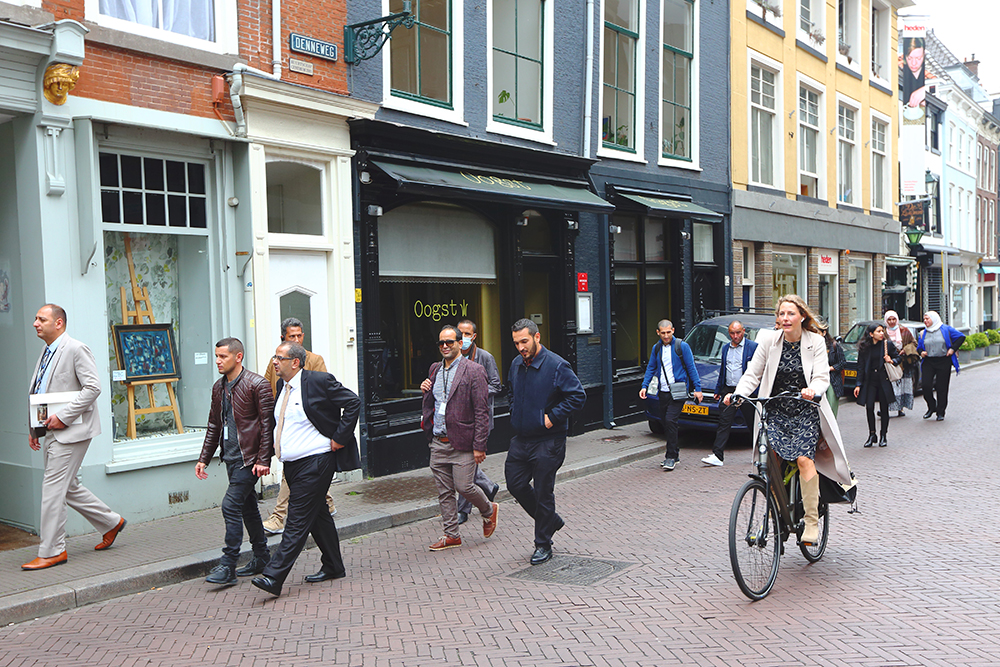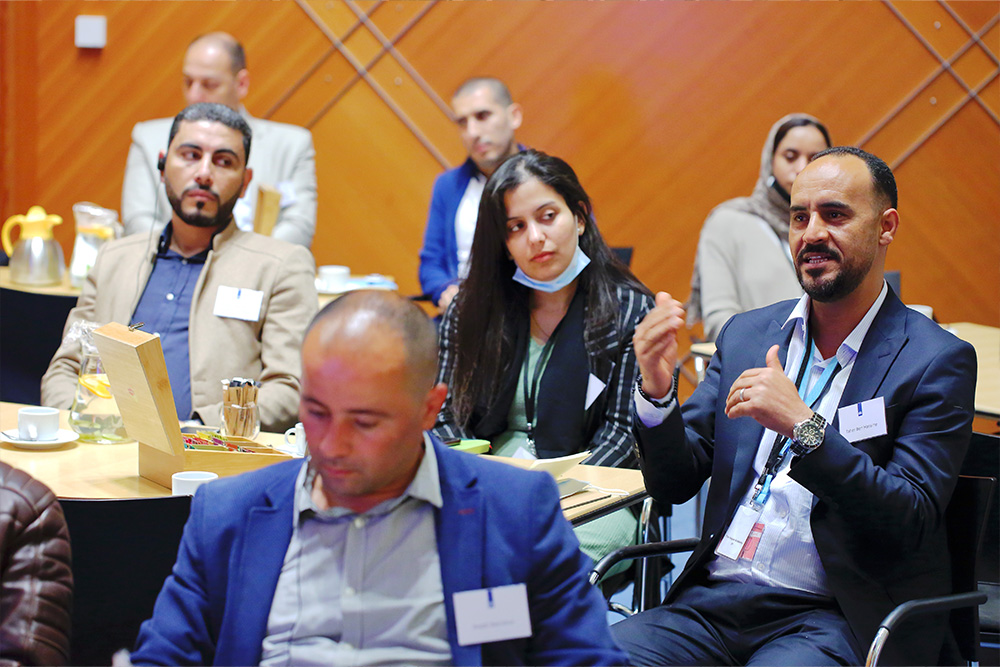In the Netherlands, despite the labour shortage, finding a job is not necessarily easy for everyone. So, what systems are there to help people access and remain in the labour market? From the Institute for Employee Benefit Schemes (UWV) at the national level to municipal services and other organisations focusing on youth employment, civil servants from the Middle East and North Africa learnt about the Dutch multilevel employment approach during the Shiraka course Social Affairs & employment.

“We facilitate job seekers in looking for work”, explains Ab Stikkelorum from the UWV, the national organisation that implements employee benefit schemes for the Dutch Ministry of Social Affairs and Employment. “We provide allowances for people who can’t find a job. But there’s more to it. We are also looking for employers willing to hire people with a distance to the labour market, like persons with disabilities.”
To achieve its goal, the UWV works closely together with municipalities. On a local level, municipalities know the labour market and its needs better than the national government. Additionally, it is their responsibility to arrange social assistance allowances after two years, when the unemployment benefits end. However, this collaboration between the national and local levels comes with numerous political challenges. Municipal elections, for example often lead to new local councils with different political agendas, programmes and ambitions. Other challenges arise from the regular meetings with the labour unions on the one hand, and the employer organisations on the other, both of whom have different views and interests.
The local approach
“The aim of social assistance allowances is that people are not living in poverty, even if unemployed”, explains Hedzer Heijink from the municipality of The Hague. “The allowances unemployed people receive from the government are lower than minimum wage. This way, people will still be motivated to find a job.” One of the challenges of the municipality is that many unemployed people do not receive social assistance because not all jobseekers are registered as unemployed or seek help. “This occurs especially among young people.”
Heijink emphasises the need to reach out to these people. it is the first of the four pillars of the municipality’s approach: “Go into the streets and talk to young people. Be present and visible. We have mobile teams and accessible locations where youth can just enter and ask questions, our so-called Jongerenpunt070. The coaches at jongerenpunt070 are often role models for the youngsters who visit.
The second pillar is to support unemployed people with various issues and coach them on going back to school and work. “We believe school is more important because it will be easier for them to find work if they have completed an education.” The other two pillars of the policy of The Hague are the cooperation with partners in the neighbourhoods – like police, social aid, welfare organisations, entrepreneurs and schools – and improving services, for example by improving their digital accessibility.
Helping people to become ‘work fit’
The main goal of the municipality is to help people to become financially independent again. Most people succeed in doing so in approximately 1.5 years. “During that time, we help people become ‘society fit’ by developing their basic skills. The next step is supporting them to be ‘work fit’ with skills like reliability, a sense of hierarchy, productivity, independence, communication and collaboration. The third step is ‘work & development’, which focuses on specific branch- of sector-related skills. This is important since one-third of the population has no qualification to join the labour market and practical skills are crucial for reintegration. The last step is to help people get jobs with regular employers.”
The municipality also helps people with disabilities to find a job by looking for good fits and experimenting with new concepts like ‘open hiring’. This means people are hired without sending a curriculum vitae or having a job interview. While working on the job, it becomes clear whether the person and function are a good match.
The young digitals
Social enterprises are also doing their part to reduce youth unemployment and provide inclusive job opportunities. The young digitals, for instance, is an organisation for people with childhood trauma or without an education. Their mission is to offer valuable work experience and guide these young people to a job as online marketeers. Their model has been replicated successfully in other countries.
Marc Pieterse: “We offer a ten-week digital training for free, and then offer these people a job. They work for us. Other companies hire us, which is how we finance 80 per cent of our company. The other 20 per cent comes from social funding.”
“We have people with different percentages of productivity and different levels of education. We make sure that our employees will be working in jobs that match their pace and ability. Some mental health illnesses are better suited to some job profiles than others: for example, people on the spectrum of autism tend to do very well solving IT problems, but less well working on digital marketing.”
_______________________________________________________________________
 The Shiraka Programme
The Shiraka Programme
Earlier this year, civil servants from the Middle East and North Africa (MENA-region) travelled to the Netherlands for the second part of the Shiraka Training Programme on Social Affairs and Employment. The information described above was collected during some of the study visits. The Shiraka programme is a Netherlands-MENA partnership initiated by the Dutch Ministry of Foreign Affairs. The Shiraka programme aims to improve bilateral relations and support sustainable democratic transitions in the MENA region (the Middle East and North Africa region). Click here for more information.
